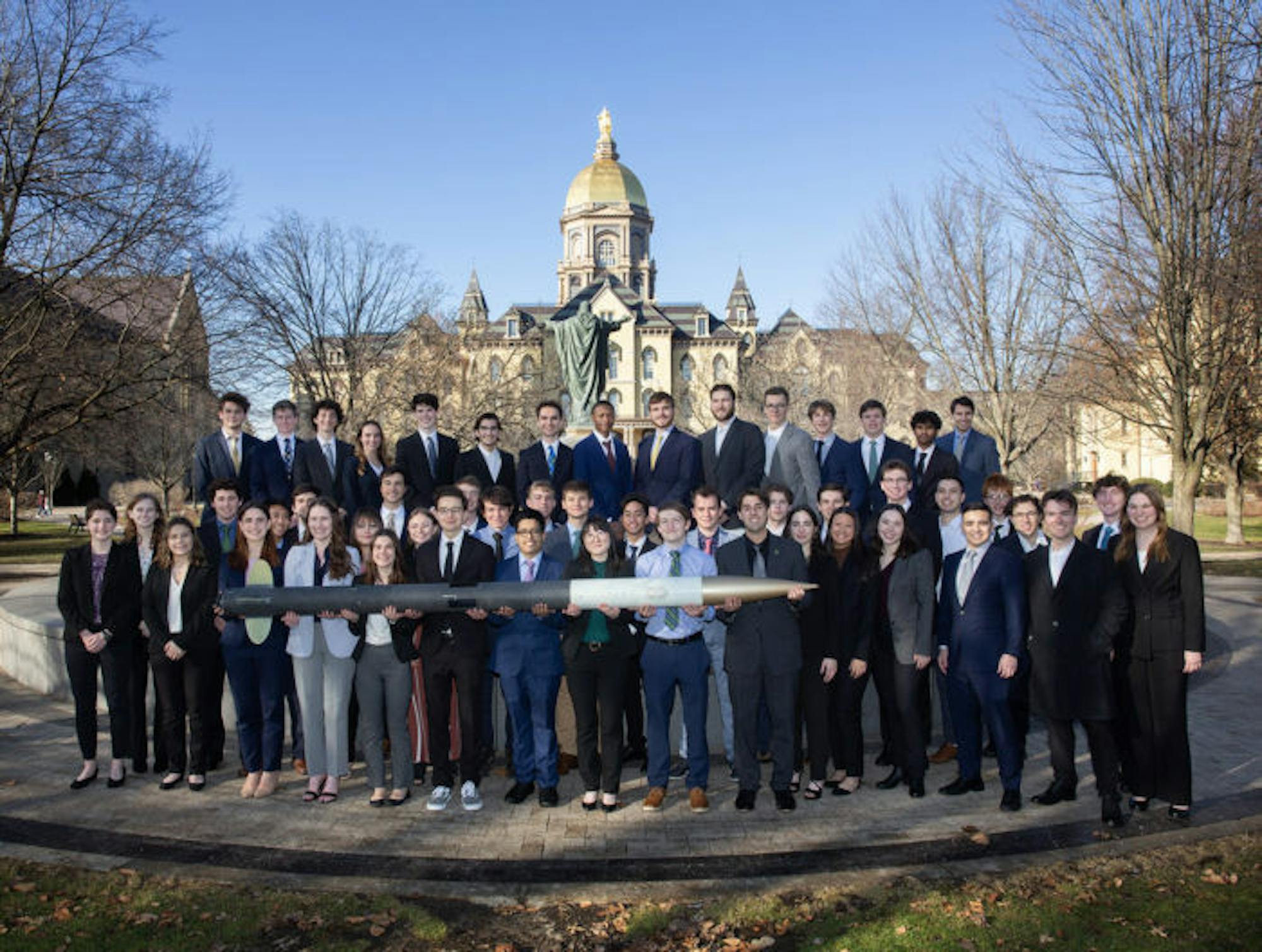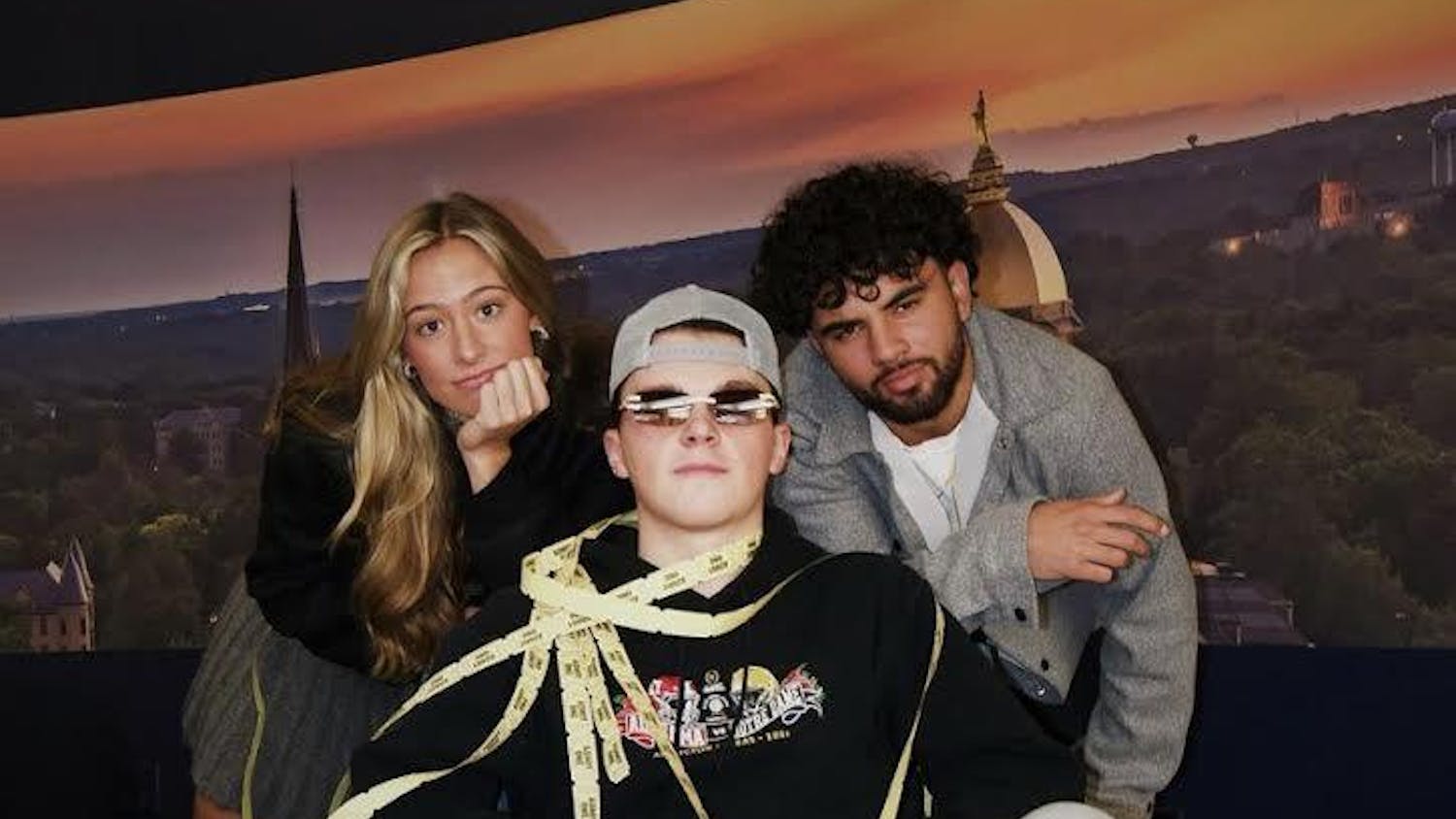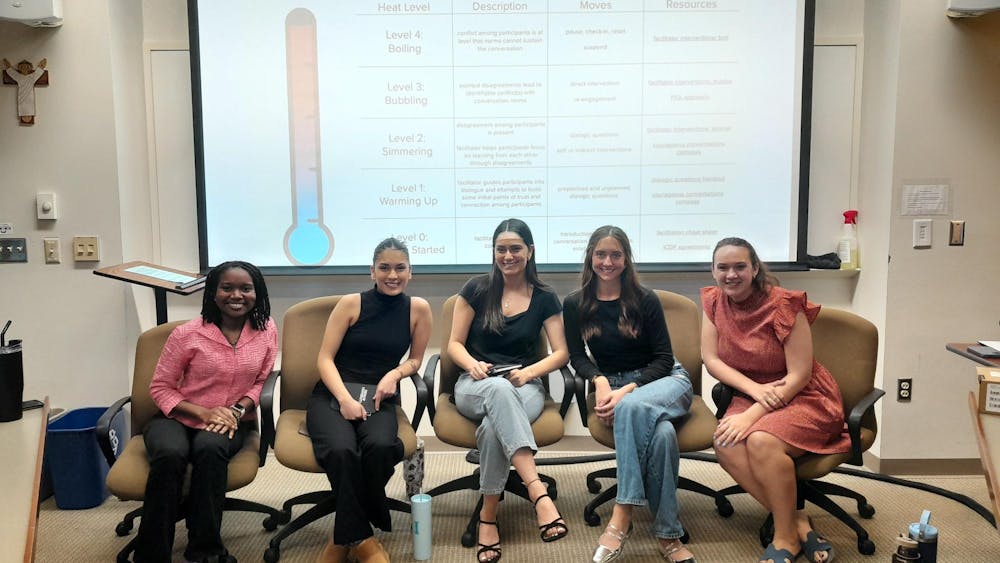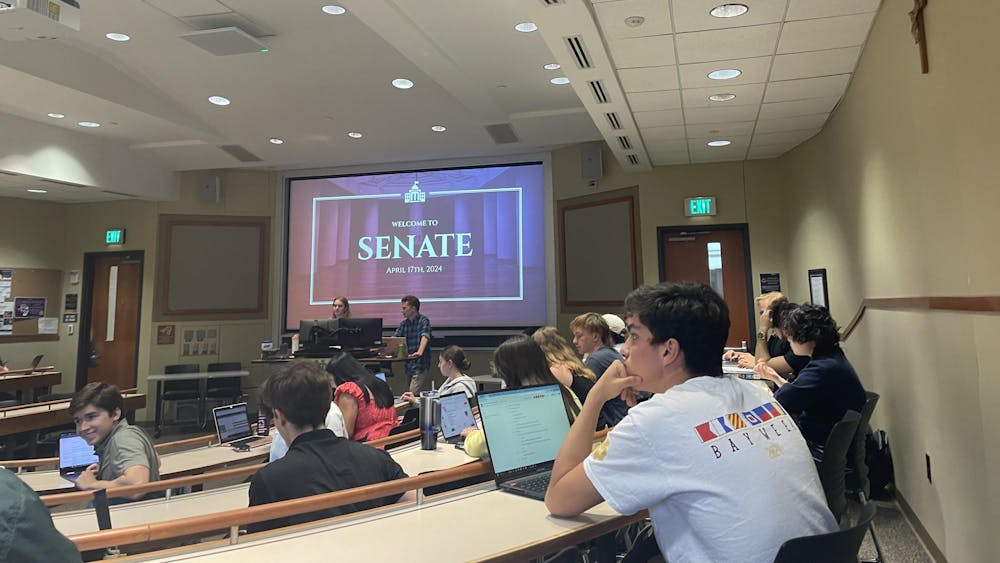On April 15, the Notre Dame Rocketry Team (NDRT) will launch its rocket in Huntsville, Alabama. The launch marks the culmination of the team’s yearlong project to design and build a rocket for NASA’s annual Student Launch challenge. 
NDRT will compete against 50 other teams from colleges across the country who have also designed rockets that aim to accomplish NASA’s mission-oriented challenge. Last year, NDRT placed second in the competition and was awarded first place in the safety category.
Each year, the team builds a new rocket that has to be recovered safely. Senior and project manager Lauren Falk said, “The rocket’s design and recovery is oriented around allowing the payload, which is an internal system, to do its job.”
This year’s challenge was to create a camera system that deploys out of the rocket after landing, orients itself vertically and receives radiofrequency commands to take pictures of the landing site.
Falk said, “NASA tends to construct those challenges in ways that simulate maybe a challenge that NASA is also working on.”
Engineers from all different disciplines in the College of Engineering, in addition to students in other majors like chemistry and business, are involved with NDRT. The students are split into six squads that each cover a part of the project: vehicles, recovery, payload, apogee control system, safety and systems.
Falk explained that the vehicles squad constructs the outside airframe of the rocket while the recovery squad separates the rocket in the air and releases parachutes so the rocket can be recovered.
Additionally, the payload squad constructs the system the rocket carries and the apogee control system squad constructs the air braking system that allows the rocket to reach a certain altitude.
By the time the students arrive at the launch, the majority of the competition score will already be completed. The actual launch is only about 10 to 15 percent of the team’s total score, with the rest attributed to written documents that are submitted to NASA for review and community engagement.
Each year the team writes three technical 250-page review documents that encompass different stages of the project life cycle: the preliminary design review, the critical design review and the flight readiness review. These are the most heavily scored elements.
Falk said that writing the documents is a completely different challenge than building the rocket.
The hardest part is determining how to “communicate what you have done in a way that people can understand,” she said.
In addition to written review documents, the team is also scored on community outreach. NDRT partners with local community organizations like the Robinson Community Learning Center (RCLC), the St. Joe Public Library System and local schools to host events that educate students about rocketry and space.
“[Community outreach] is a fun element that NASA encourages, but we also really enjoy doing that, scored or not scored,” Falk said.
Sophomore educational outreach co-leads Kathryn Sherman and Sophia Yu said that the outreach events are centered around hands-on activities, like building mini rockets.
“It’s one thing for us to describe a rocket to someone, but when they actually get to build and launch a small [rocket] themselves, that’s when they get genuinely excited and curious,” Sherman said. “It’s so rewarding to see the look on a young student’s face when they’ve actually created something on their own.”
Through community outreach, NDRT hopes to inspire the next generation of students and share their passion for science and engineering.
“The topics we teach are geared towards rocketry and space which are topics not typically covered in the standard school curriculum,” Yu said. “It is so important to give students the chance to get excited and curious about things that they wouldn’t otherwise get the chance to learn about.”
Members of NDRT are grateful that they are able to share their work with the community and they appreciate the sense of comradery that the team fosters. Being a part of a design team has been a formative experience for many students, allowing them to apply what they have learned in their classes and share with others.
“I don't think my education at Notre Dame would be rounded out quite as much without this sort of experience,” Falk said.













